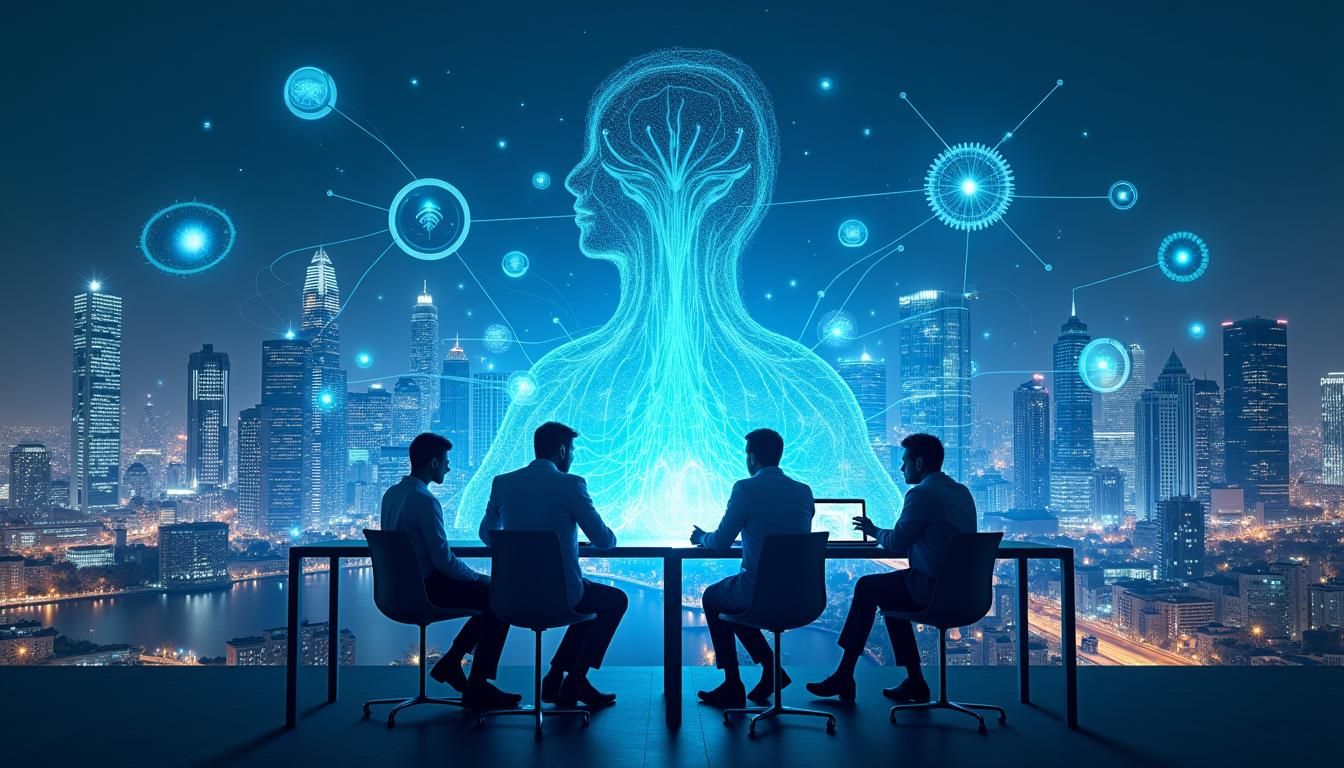
As we approach mid-2025, artificial intelligence continues to reshape our world at an unprecedented pace. From revolutionary hardware advancements to ethical workforce transformations, this year has already delivered remarkable developments that promise to redefine industries. At Aleck.ai, we’re committed to helping you navigate these changes through expert analysis and actionable insights.
At the forefront of AI innovation, Nvidia unveiled its Blackwell Ultra and Vera Rubin AI chips at GTC 2025, marking a quantum leap in processing power. The Rubin architecture—slated for late 2026—promises to accelerate generative AI systems capable of contextual reasoning and multi-step problem solving. These chips will power everything from autonomous factories to climate modeling supercomputers.
Notably, Nvidia’s collaboration with Google DeepMind and Disney Research has produced the Isaac GR00T N1, an open-source platform for developing humanoid robots. Paired with the new Newton physics engine, this toolkit enables robots to learn complex physical tasks like origami folding and kitchen organization through simulation-first training.
Tencent’s announcement of a 50% capital expenditure increase for AI infrastructure signals China’s aggressive push to lead the global AI race. Their upgraded Hunyuan large language model now integrates DeepSeek technology for enhanced multimodal capabilities, while Alibaba and ByteDance are developing competing systems optimized for industrial automation and hyper-personalized retail experiences.
Unlike traditional models requiring explicit instructions, agentic AI now autonomously handles multi-domain tasks—from managing entire supply chains to providing personalized medical diagnostics. Microsoft’s latest robotics division demonstrates this through warehouse bots that dynamically reroute shipments during disruptions while negotiating with supplier AIs in real time.
2025 marks quantum computing’s transition from labs to commercial applications:
- Pharmaceutical firms use quantum simulations to slash drug discovery timelines
- Financial institutions optimize trillion-dollar portfolios using hybrid quantum-classical algorithms
- Material scientists design room-temperature superconductors with machine learning-enhanced quantum models
The World Economic Forum’s 2025 report reveals AI’s dual impact:
- 85 million jobs displaced in manufacturing, data entry, and routine customer service
- 97 million new roles created in AI oversight, synthetic data engineering, and human-robot collaboration
Crucially, demand surges for hybrid skills:
1. AI Ethics Auditing
2. Human-Centric Interface Design
3. Quantum Machine Learning Engineering
4. Robotics Process Optimization
5. Generative Content Curation
While Philadelphia ranks 11th in U.S. AI job growth with 12,000+ openings, Detroit struggles with <500 postings—a gap reflecting uneven access to retraining programs. Aleck.ai’s latest analysis shows organizations investing in micro-credentialing platforms see 68% higher AI adoption success rates compared to traditional training methods.
The AI sector addresses its environmental footprint through:
- Google’s Net-Zero Data Centers: Co-located solar/wind farms with 90% renewable energy utilization
- ASML’s Circular Manufacturing: 88% component reuse rate in chip-making equipment
- Biden Administration’s Clean AI Initiative: Fast-tracking approvals for sustainable AI infrastructure projects
Cutting-edge applications include:
- NVIDIA’s Earth-2 climate prediction models running on Rubin architecture
- DeepMind’s fusion reactor control algorithms achieving 30% plasma confinement improvements
- IBM’s carbon capture material discovery platform reducing R&D costs by $200 million annually
As Jensen Huang noted at GTC 2025, we’re transitioning from “AI that perceives” to “AI that reasons”—a shift requiring thoughtful integration across technical and human systems. While challenges like workforce displacement and energy demands persist, the coordinated efforts of industry leaders, policymakers, and educators suggest a cautiously optimistic outlook.
For organizations seeking guidance, Aleck.ai recommends:
1. Conducting quarterly AI readiness assessments
2. Implementing ethics-by-design frameworks
3. Partnering with clean energy providers for compute-intensive projects
4. Developing hybrid human-AI workflow prototypes
The AI revolution isn’t coming—it’s here. Those who embrace its complexity while prioritizing human values will lead the charge into our intelligent future.
Stay informed with Aleck.ai’s continuous coverage of AI breakthroughs, featuring expert analysis on implementing these technologies responsibly and effectively.
Sources:
AP News | Reuters | Financial Times | World Economic Forum